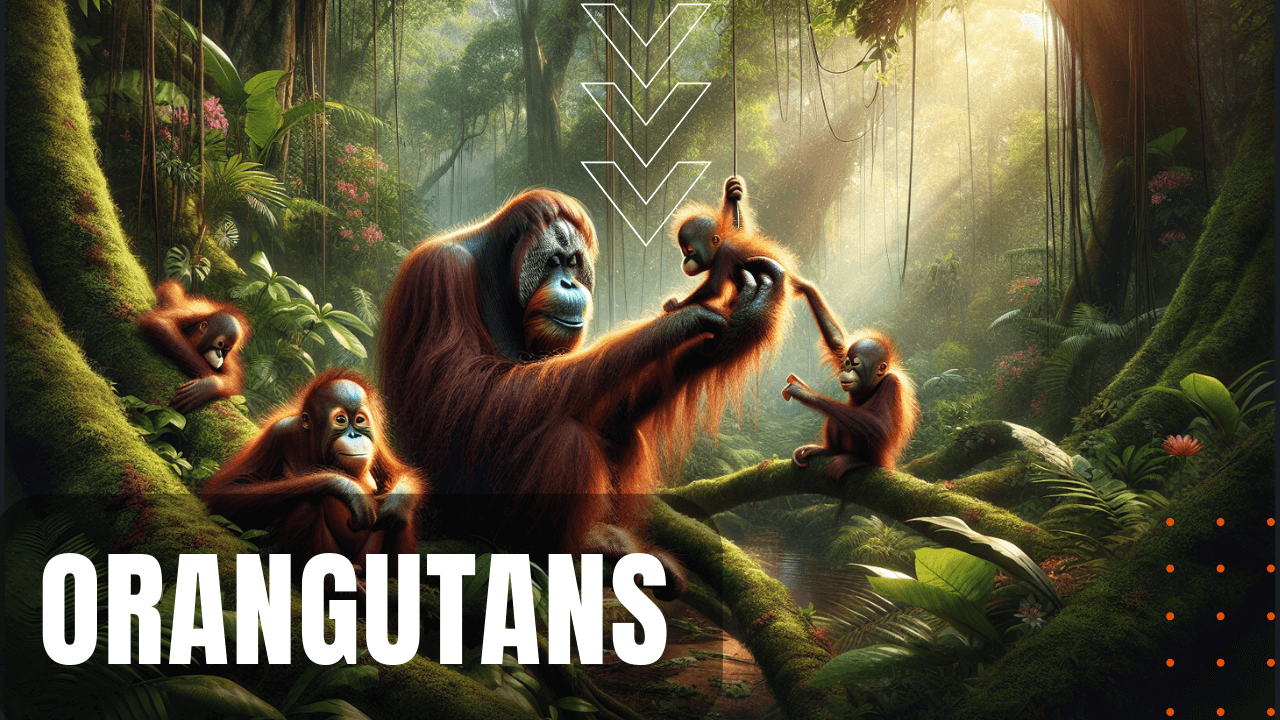The Life of Orangutans

Of the family Hominidae, orangutans are great apes that exist in three distinct species, Pongo pygmaeus on the island of Borneo, which is further divided into three subspecies, Pongo abelii on the island of Sumatra and the recently discovered tapanuli orangutan, also on the island of Sumatra. Considered the largest arboreal species in the world, orangutans spend over 95% of their lives aloft in trees, eating, sleeping and traveling atop forest canopies. Orangutans are also among the most sexually dimorphic of all primates, with adult males weighing up to 300 pounds, while females generally weigh half that much.
Massive Arm Span
Standing five feet tall with an eight foot arm span, their bodies are well adapted for their unique form of arboreal locomotion, known as quadrumanous scrambling. Surviving on fruits such as figs and durian, a single fruit tree can feed only one or two orangutans depending on the size of the tree, obliging orangutans to travel great distances through treetops to keep themselves adequately nourished, although when fruit becomes scarce, they’re also known to vary their diet with insects such as termites. Orangutans don’t live in large groups like other ape species, preferring relative solitude in tropical canopies to avoid contact with humans and their natural predator, the Sumatran tiger. Possessing long and narrow hands and feet with opposable thumbs, orangutans are especially suited for grasping branches as well as brachiation or swinging through trees, possessing ligamentum teres in their hip and shoulder joints that allow them to bend like yoga masters.
Sex Lives of Orangutans
Covered in reddish brown hair, females become sexually mature when fully grown, although they don’t have their first offspring until 15 or 16 years of age, and while males achieve sexual maturity in their teens, the majority don’t become sexually active until their twenties in Borneo and thirties in Sumatra, which is late in life given their average 35 to 40 year lifespan in the wild. Menstruating three to four days every 29 to 32, females gestate their young for approximately eight and a half months, before giving birth to generally a single offspring weighing in the neighborhood of three and a half pounds. Considered the longest infancy of all the great apes, babies and later young orangutans stay with their mothers until adolescence, which in some species can last as long as five years, making the life of orangutans, a treetop giant of the animal world.
